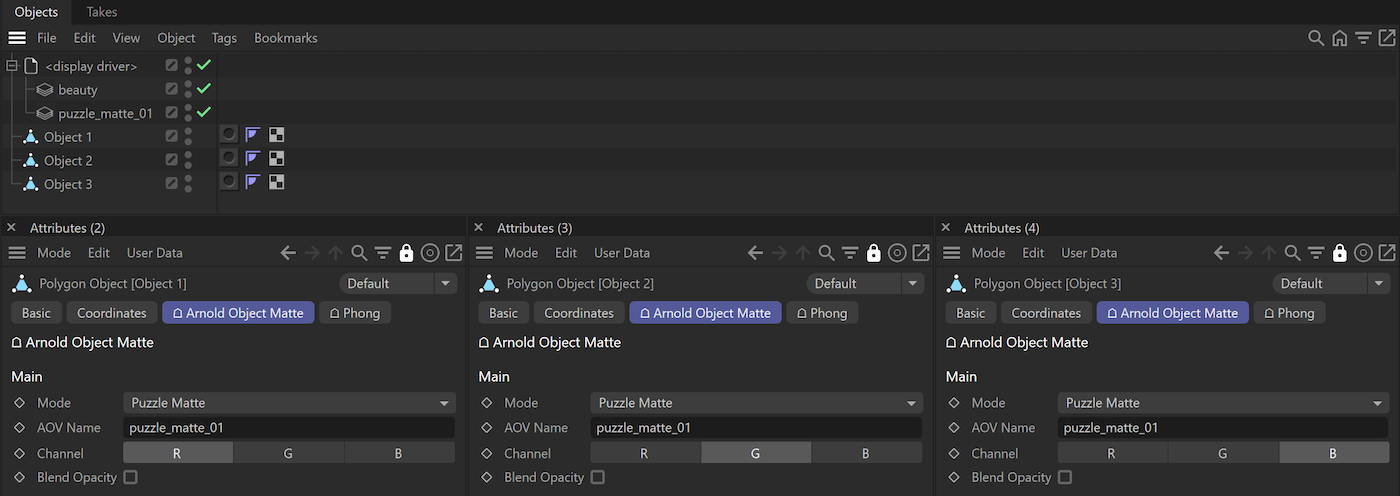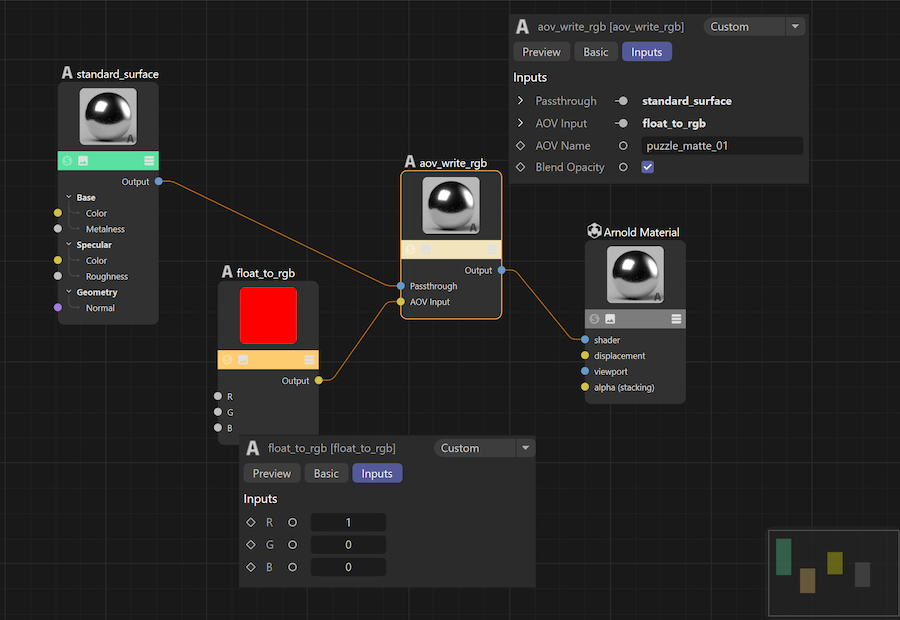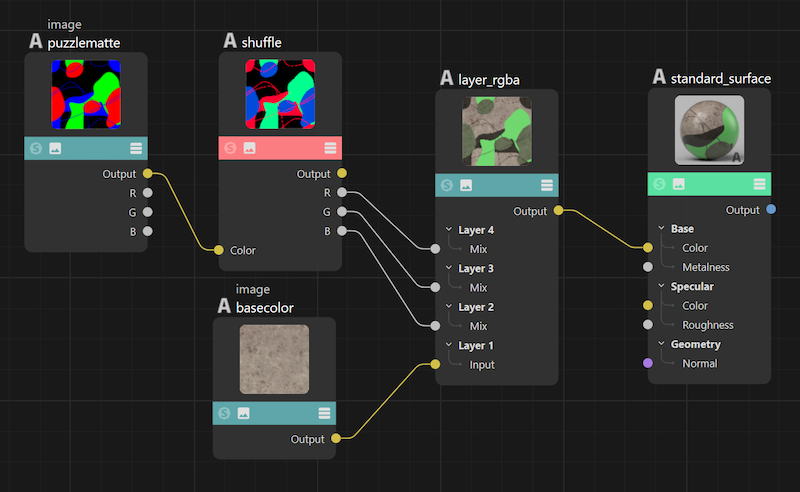Puzzle Matte - Arnold for Cinema 4D
In this short tutorial, we will cover the process of setting up and rendering Puzzle Matte AOVs. Puzzle Matte AOV can hold per-pixel contribution of objects and materials on separate RGB channels. That means multiple objects and materials (up to 3) can contribute to the same pixel, which helps overcome aliasing-related issues in compositing when the scene uses depth of field or motion blur.
An example scene can be downloaded here.
Object ID
Follow these steps to setup a Puzzle Matte AOV for object IDs.
- Add an Arnold Object Matte tag to each object.
- Set the AOV name. Use the same name for each object that goes to the same AOV. (e.g.
puzzle_matte_01for Object 1, Object 2 and Object 3,puzzle_matte_02for Object 4, Object 5 and Object 6, and so on) - Select a separate channel for each object within the same AOV. (e.g.
Rfor Object 1,Gfor Object 2,Bfor Object 3)

Material ID
Follow these steps to setup a Puzzle Matte AOV for material IDs.
- Open your shader graph (Arnold Node Material).
- Add an
aov_write_rgbshader as the root of your shader graph. - Set the AOV Name in the
aov_write_rgbshader (for example, "puzzle_matte_01"). - Connect your surface shader to the Passthrough input of the
aov_write_rgbshader. - Add a
float_to_rgbshader and connect it to the AOV Input of theaov_write_rgbshader. This step is needed in order to avoid color conversion when exporting the AOV Input to Arnold. - Set the channel to 1 in the
float_to_rgbshader where you want your material ID written.

Textures
Puzzle mattes are mainly used in compositing, but they can also be useful in texturing. Since they can hold up to 3 masks, you can use a single puzzle matte to mix multiple color/texture layers together.
- Load the puzzle matte with an
imageshader. - Add the R, G, B outputs to the
imageshader (right click > Add Output). - Connect the R, G, B output to the Mix of the respective layers of a
layer_rgba_shader. - Optionally you can add a
shuffleshader to easily switch between the R, G, and B output channels.

Limitations
Currently only camera rays are supported when creating object/material ID masks. Masks are not recorded through reflections and refractions.
